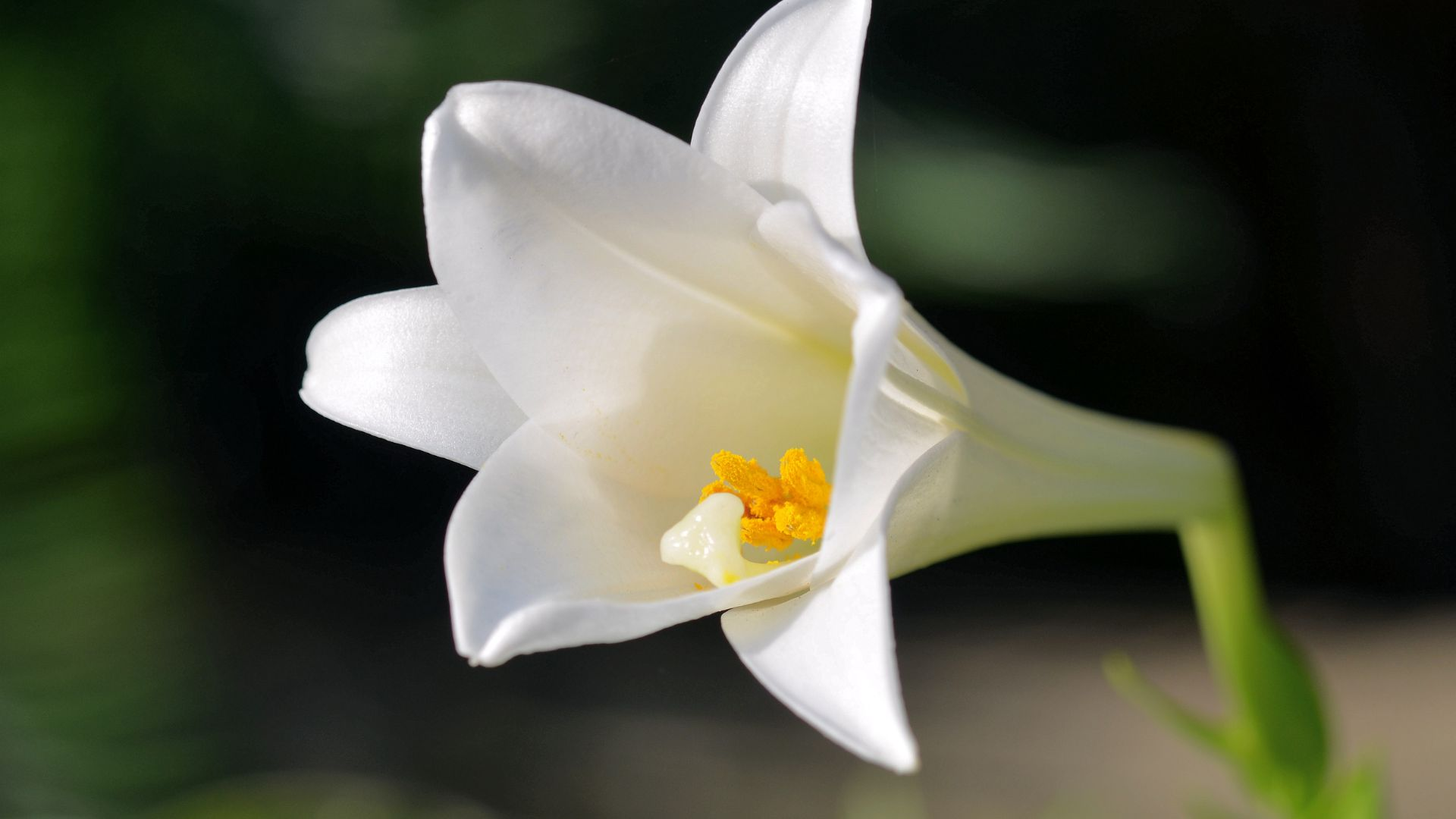Growing Lilies successfully in your garden requires a combination of knowledge, proper techniques, and nurturing care. By following these valuable tips and practices, you can cultivate stunning Lilies that will thrive and add a touch of elegance to your outdoor space.
Transitioning from bulb to blossom, these vibrant flowers bring an enchanting beauty that captures the eye and soothes the soul. With active planning and diligent implementation, you can create a garden that bursts with colors and sweet fragrance, inviting admiration from all who behold it.
Whether you're a seasoned gardener or a beginner, these practical guidelines will equip you with the essential tools to ensure the healthy growth and abundant blooms of your Lilies. So, to embark on this journey of horticultural excellence, let's delve into the tips for growing Lilies successfully in your garden. If you want to order lilies, make sure you read this one!
Choosing the Right Lily Varieties for Your Garden
When it comes to creating a beautiful garden with Lilies, the key lies in selecting the right varieties. With a wide range of colors, sizes, and bloom times available, choosing the perfect Lily varieties can elevate your garden to new heights of splendor.
First and foremost, consider the bloom time of different Lily flowers varieties. Some Lilies bloom early in the spring, while others flower in the summer or fall. By carefully selecting a combination of early, mid-season, and late-blooming Lilies, you can enjoy a continuous display of colorful lily blooms throughout the growing season.
Choosing Lily Varities
Another crucial factor to consider is the height and size of the Lily plants. Tall varieties like Oriental Lilies or Trumpet Lilies can create dramatic focal points in your garden, while shorter varieties like Asiatic Lilies or Pixie Lilies are ideal for borders or containers.
Furthermore, pay close attention to the color palette. Lilies are available in a vast array of hues, ranging from vibrant yellows and oranges to soft pinks, purples, and whites. Consider the overall theme and aesthetics of your garden when choosing Lily colors to create a harmonious and visually appealing landscape.
Additionally, take into account the hardiness and adaptability of the Lily varieties to your climate and growing conditions. Some Lilies are more tolerant of cold temperatures, while other lilies thrive in warmer regions. Conduct research on the specific requirements of each Lily variety to ensure they will flourish in your garden.
Lastly, embrace the spirit of experimentation and mix different Lily varieties to create stunning combinations and contrasts in your garden. The interplay of colors, heights, and bloom times can add depth and visual interest to your flower beds or containers.
So, if you're looking to order lilies online, Stemmz is a reliable choice that guarantees fresh and beautiful blooms delivered right to your doorstep.
Essential Steps for Planting Lilies: Soil Preparation, Sunlight, and Spacing
Planting Lilies successfully requires following a few essential steps that ensure optimal growth and blooming. These steps include soil preparation, considering sunlight requirements, and proper spacing.
First and foremost, prepare the soil to create a favorable environment for Lilies to thrive. Select a well-drained location in your garden, ensuring the soil is moist but not waterlogged. Incorporate organic matter such as compost or well-rotted manure to enrich the soil, enhance its fertility, and promote good drainage.
Next, consider the sunlight requirements of Lilies. Most lilies varieties thrive in full sun to partial shade. Ensure the planting site receives a minimum of six hours of direct sunlight per day. However, keep in mind that some Lilies, like Martagon or Wood Lily, can tolerate more shade. Conduct research to determine the specific sunlight preferences of the Lily variety you are planting.
Proper spacing plays a vital role in the successful growth of Lilies. When planting bulbs, ensure you provide adequate spacing to prevent overcrowding. Leave 6-8 inches of space between each bulb to allow for proper airflow and to avoid competition for nutrients and water.
If your looking for the best lilies bouquet. Order lilies for delivery with Stemmz today.
Watering Lilies: Proper Irrigation Techniques for Healthy Growth
Proper watering plays a vital role in the healthy growth and vibrant blooms of Lilies. By applying appropriate irrigation techniques, you can ensure that your Lilies receive the optimal amount of moisture they need. Let's explore some guidelines to help you water your Lilies effectively:
Firstly, water your Lilies deeply, providing a thorough soaking. This encourages deep root growth, enabling the plants to withstand dry periods. Avoid shallow watering, as it promotes shallow root development, which can make the plants more susceptible to drought.
Next, schedule your watering sessions during the right time of the day. It's best to water your Lilies early in the morning or late in the afternoon. This allows the plants to absorb moisture before the heat of the day causes excessive evaporation. Conversely, avoid watering in the evening to prevent prolonged moisture on the foliage, which can lead to fungal diseases.
Proper Techniques
Direct the water at the base of the plants, focusing on watering the soil rather than the leaves. This helps prevent leaf diseases and ensures that the water reaches the roots where it is most needed.
Regularly monitor the moisture level of the soil around your Lilies. Insert your finger about an inch deep into the soil to assess its dryness. When the soil feels dry, it's time to water, but if it still feels moist, wait a little longer before watering again.
To conserve moisture and promote healthier growth, consider applying a layer of organic mulch, such as bark chips or straw, around the base of your Lilies. Mulch helps retain soil moisture, regulate soil temperature, suppress weed growth, and reduce water evaporation.
Adjust your watering frequency during different stages of growth. Lilies require more water during the active growth and blooming period. Increase the frequency of watering, especially during hot and dry weather conditions. However, as the flowering phase concludes and the plants enter dormancy, gradually reduce watering to avoid over-saturation.
Remember, every garden and climate is unique, so adapt your watering schedule based on the specific needs of your Lilies. By implementing proper irrigation techniques, you actively provide your Lilies with the right amount of moisture, promoting healthy growth and ensuring a breathtaking display of blooms.
If you're looking for a reliable and hassle-free lilies delivery service, contact us! Order lilies today.
Fertilizing Lilies: Nutrient Requirements and Best Practices
To ensure the optimal growth and blooming of Lilies, proper fertilization is essential. By meeting their nutrient requirements and implementing best practices, you actively provide your Lilies with the necessary elements for thriving. Here are some guidelines to help you effectively fertilize your Lilies:
First and foremost, understand the nutrient requirements of Lilies. They require a balanced supply of essential nutrients, including nitrogen (N), phosphorus (P), and potassium (K). These nutrients support overall plant health, root development, and flower production. Choose a fertilizer specifically formulated for flowering plants or plant lily bulbs with a nutrient ratio such as 5-10-10 or 10-10-10.
Apply the fertilizer at the appropriate time. Begin fertilizing your Lilies in early spring, as new growth emerges. Repeat the application after the first flowering to support the development of new bulbs for the following year. Avoid fertilizing late in the growing season, as it can stimulate late, tender growth that is susceptible to frost damage.
Best Practices
Use the correct application method. Evenly distribute the fertilizer around the base of the plants, ensuring it does not come into direct contact with the foliage or bulbs. Lightly work the fertilizer into the top inch of soil or utilize a slow-release granular fertilizer that gradually releases nutrients over time.
Adhere to the recommended rates provided on the fertilizer package. Excessive fertilizer can result in excessive foliage growth at the expense of flower production and can contribute to environmental pollution.
After applying the fertilizer, water the soil thoroughly. This facilitates the dissolution of nutrients and enhances their absorption by the roots. Additionally, it prevents the fertilizer from sitting on the foliage, which could lead to burning.
Monitor the response of your Lilies to the fertilizer. Healthy plants with abundant blooms indicate adequate nutrition. However, if your plants exhibit signs of nutrient deficiencies, such as yellowing leaves or stunted growth, you may need to adjust the fertilization schedule or increase the amount of fertilizer used.
Keep in mind that each garden and soil composition is unique. Regularly test your soil's nutrient levels and adjust your fertilization practices accordingly. By understanding the nutrient requirements of your Lilies and implementing best practices for fertilization, you actively promote their healthy growth, vibrant blooms, and overall vitality. Order lilies for delivery with Stemmz today.
Managing Pests and Diseases in Lily Plants: Common Issues and Prevention Tips
To ensure the health and vitality of Lily plants, actively manage pests and diseases. Address common issues and implement preventive measures to protect your Lilies from potential damage. Here are some guidelines to help you manage pests and diseases in Lily plants effectively:
First, familiarize yourself with common Lily pests such as aphids, thrips, mites, and slugs. Regularly inspect your plants for signs of infestation, such as distorted leaves, webbing, or holes in foliage.
Implement natural pest control methods as an approach. Introduce beneficial insects like ladybugs or lacewings that prey on aphids and other harmful pests. You can also spray a mild solution of insecticidal soap or neem oil to deter pests.
Prevention Tips
Prevent fungal diseases like botrytis blight and powdery mildew. Ensure proper air circulation around your plants by providing adequate spacing. Avoid overhead watering, as it promotes fungal growth. Apply a fungicide if necessary, following the manufacturer's instructions.
Practice good sanitation to maintain plant health. Regularly remove fallen leaves, debris, and weeds from around your Lily plants. This eliminates hiding spots for pests and reduces the risk of disease transmission. Dispose of any infected plant material away from your garden.
Choose disease-resistant Lily varieties as a prevention strategy. Opt for cultivars known for their resistance to common diseases in your area. Disease-resistant varieties withstand infections, reducing the need for intervention.
Continuously monitor the health of your Lily plants, looking for signs of stress or disease. Early detection allows for prompt action, preventing further damage or spread of the problem. Remove and destroy any infected or diseased plant parts.
Maintain the overall health of your Lily plants by providing proper cultural care. Regularly water, fertilize appropriately, and ensure adequate sunlight. Well-nourished and vigorous plants develop stronger resistance to pests and diseases.
By implementing these management strategies, effectively address common pests and diseases in Lily plants. Regular monitoring, early intervention, and good cultural practices contribute to the overall health and longevity of your beautiful Lilies. Order lilies online with Stemmz.
Supporting Lily Stems: Staking and Providing Structural Support
To ensure the upright growth and aesthetics of your Lily plants, actively support their stems to prevent bending, breaking, or falling over. Staking and providing structural support play a crucial role in maintaining the integrity of your Lilies. Here are some guidelines to help you effectively support Lily stems:
Firstly, assess the need for support by observing the growth habit and height of your Lily plants. Determine if the stems tend to lean or require assistance to withstand strong winds or heavy rain.
Choose suitable stakes made of sturdy, durable materials such as bamboo, metal, or plastic. Select stakes that are longer than the mature height of your plants to accommodate their growth.
Position the stakes evenly around the Lily plants, ensuring stability by firmly inserting them into the soil. Place the stakes outside the perimeter of the plant to avoid damaging the bulbs or roots.
Supporting Lily Stems
Attach the stems to the stakes using soft ties or garden twine. Start at the base of the stems and continue tying at regular intervals, allowing room for growth and flexibility. Avoid tying too tightly, as it may restrict natural movement.
For Lilies with large or heavy blooms, provide additional support with individual stem supports or hoop stakes. These targeted supports prevent the stems from bending or breaking under the weight of this fragrant flowers.
Regularly check and adjust the supports as the Lily plants grow. Monitor their progress and make necessary adjustments to maintain effective support.
When the Lily stems have finished flowering and begin to decline, remove the supports. Gently untie the stems from the stakes, taking care not to damage the plants. Remove the stakes from the soil, leaving a clean and tidy garden bed. Experience fast and reliable lilies bouquet delivery with Stemmz. Order lilies today.
Types of Lilies: Oriental lilies, Calla lilies, Trumpet lilies, Tiger Lilies, Asiatic Lilies, Daylilies, Easter Lilies and Stargazer Lilies
Overwintering Lilies: Protecting Bulbs in Colder Climates
In colder climates, take proactive steps to protect lily bulbs during winter and ensure their survival for the following growing season. By implementing the necessary measures, you can safeguard the bulbs and enjoy the beauty of lilies year after year. Here are some guidelines to help you effectively overwinter lilies:
-
Time the preparation: Begin preparing your lilies for winter when the foliage naturally starts to yellow and die back. Typically, this occurs in late fall or early winter, before the ground freezes.
-
Clean and prepare the bulbs: Carefully dig up the lily bulbs, ensuring no damage occurs. Remove any remaining foliage and gently brush off excess soil. Inspect the bulbs for signs of damage or disease, and discard any that appear unhealthy.
-
Cure and store the bulbs: Dry the bulbs for a few days in a cool, dry location. Once dry, store them in a well-ventilated container or paper bag filled with peat moss, vermiculite, or dry sand. Clearly label the container to easily identify the lily variety.
Protecting Bulbs
-
Choose the right storage location: Find a cool, dark location to store the lily bulbs over winter. Maintain a consistent cool temperature, ideally between 40-50°F (4-10°C), to prevent premature sprouting.
-
Regularly check and maintain the bulbs: Periodically inspect the stored bulbs throughout the winter. Discard any bulbs showing signs of rot, mold, or decay. Lightly mist the storage medium if it appears excessively dry.
-
Replant in spring: Once the danger of frost has passed and the soil begins to warm up in spring, replant the lily bulbs. Also, choose a well-draining location with full or partial sun, and prepare the soil by adding organic matter.
-
Provide proper care in the growing season: As the lilies emerge, ensure regular watering, fertilization, and adequate sunlight. Also, monitor for pests and diseases, promptly addressing any issues to ensure healthy growth.
By following these steps to overwinter lilies, you actively protect the bulbs in colder climates. Proper timing, cleaning, curing, and storage contribute to the successful preservation of the bulbs, enabling them to thrive when replanted in the spring.
With proper care and attention, you can enjoy the stunning blooms of lilies year after year. Send lilies to your loved ones! Experience fast and reliable lilies bouquet delivery with Stemmz. Order lilies online today.
Tips for Extending the Lily Blooming Season
To extend the blooming season of lilies and maximize their beauty for a longer period, you can implement several strategies. By applying the following tips, you can increase the flowering time of your lilies:
Choose a variety of lily bulbs
Select different varieties that bloom at different times. This selection ensures a continuous display of blooms throughout the season.
Plant lilies in succession
Instead of planting all the bulbs at once, stagger the planting over several weeks or months. This approach creates a sequence of blooming stages, providing a constant stream of vibrant flowers.
Provide adequate sunlight
Ensure lilies receive at least six hours of direct sunlight each day. This provision of sunlight enhances their blooming potential.
Implement proper watering practices
Keep the soil consistently moist, but avoid waterlogging. Deeply water the lilies, allowing the water to reach the roots. Additionally, mulching around the plants retains moisture and regulates soil temperature.
Deadhead spent flowers
Regularly remove faded or spent flowers by cutting them off near the stem. This deadheading redirects the plant's energy toward new bud formation and promotes continuous blooming.
Apply fertilizer at the right time
Feed the lilies with a balanced fertilizer before planting and during the growing season. Proper application of nutrients supports healthy growth and extends the blooming period.
Control pests and diseases
Monitor lilies for common pests like aphids, lily beetles, and slugs. Take measures to control these pests and promptly address signs of diseases to protect the plants.
Protect lilies from extreme weather
During heavy rains or strong winds, provide support to the stems using stakes or cages. This protection prevents bending or breaking of the flowers and stems, preserving their beauty and extending the blooming season.
By following these tips, you can extend the blooming season of your lilies. The selection of varieties, staggered planting, provision of sunlight, proper watering, deadheading, fertilizer application, pest control, and weather protection all contribute to prolonged and abundant blooms. Enjoy the vibrant colors and captivating fragrance of your lilies for an extended period throughout the growing season. Order lilies bouquet today!
Conclusion
In conclusion, by implementing these tips for growing lilies successfully in your garden, you can create a breathtaking floral display that will enhance the beauty of your outdoor space. The careful selection of lily varieties, proper soil preparation, adequate sunlight exposure, regular watering, timely fertilization, and diligent pest control will all contribute to your lilies' healthy growth and abundant blooming.
Additionally, providing structural support, practicing proper deadheading, and protecting the bulbs during winter months will ensure their longevity and continued vibrancy.
Order Lilies With Stemmz
By incorporating these strategies into your gardening routine, you can cultivate a thriving lily garden that will impress and delight both you and your visitors. So, roll up your sleeves, grab your gardening tools, and put these tips into action. Get ready to be rewarded with an enchanting floral spectacle that will leave you in awe. Happy gardening! Order lilies online with Stemmz!











